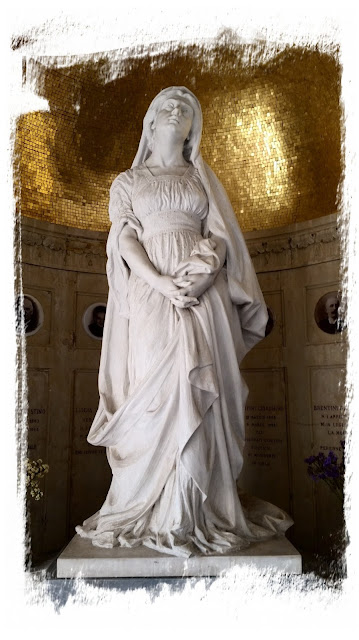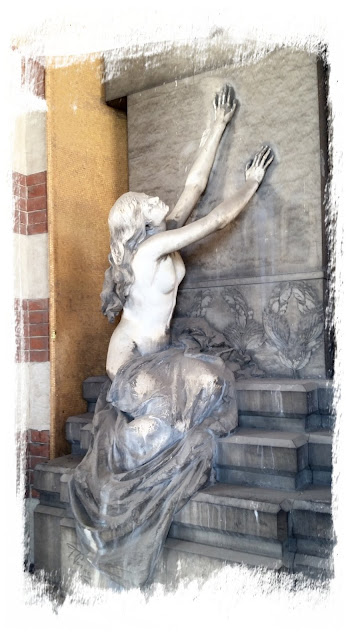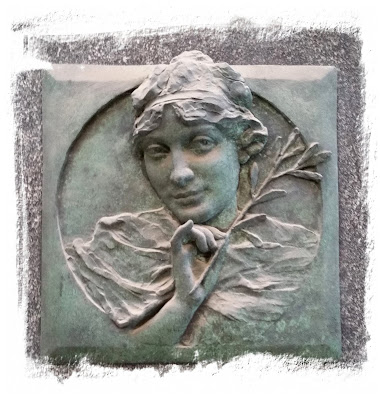My main reason for hanging out with the dead and departed is for the artworks in so many of the sites. Nowhere else will you get to see up close such wonderful marbles and bronzes of all descriptions. And the sculptures are not polished and curated with clever lighting etc as in museums - but rather, here they are left to the elements to cover them with dust and for mother time to erode them with love ... and here they represent the departed souls buried beneath ... they are history and they are timeless ... they are beautiful ...
And here in Milan - just a short tram ride from my apartment, is the most historical of the city's many cemeteries - the very grand Cimitero Monumentale ...
Designed by the architect Carlo Maciachini (1818–1899), it
was planned to consolidate a number of small cemeteries that used to be
scattered around the city into a single location. Officially opened in 1866, it has since then been filled
with a wide range of contemporary and classical Italian sculptures as well as
Greek temples, elaborate obelisks, and other original works such as a
scaled-down version of the Trajan's Column ( see in my next post ). Many of the tombs belong to noted
industrialist dynasties, and were designed by leading Italian artists and architects.
The main entrance is through the large Famedio, a massive
Hall of Fame-like Neo-Medieval style building made of marble and stone that
contains the tombs of some of the city's and the country's most honored
citizens, including that of novelist Alessandro Manzoni.
The Civico Mausoleo Palanti designed by the architect Mario Palanti is a tomb built for meritorious "Milanesi", or citizens of Milan. The memorial of about 800 Milanese killed in Nazi concentration camps is located in the center and is the work of the group BBPR, formed by leading exponents of Italian rationalist architecture that included Gianluigi Banfi.
I spent over three hours wandering the Cemetery - exhausting work on a day when the temp was in the thirties ... !!! ... and I came home with just under 400 images on my poor-worn-out-and-over-heated camera ... And
so with this first blog post I will take you around the inside area of the Palanti
featuring just a handful of the many stunning
sculptures ...
one of several "wall-crypts"
The tomb of novelist / poet Alessandro Manzoni
in the centre of the Palanti ...
in the centre of the Palanti ...
In my next blog post I'll take you outside into the grounds of the cemetery to wander the many laneways to catch a view of some of the hundreds of stunning sculptures ...
... stay tuned ...


















































No comments:
Post a Comment
Note: Only a member of this blog may post a comment.